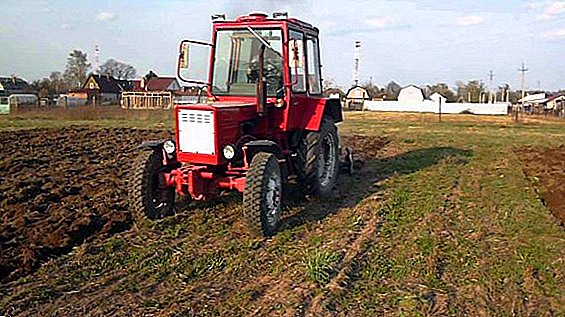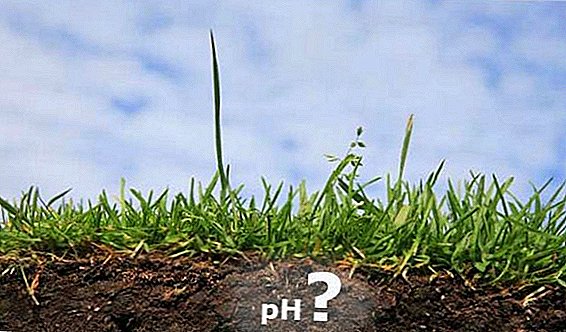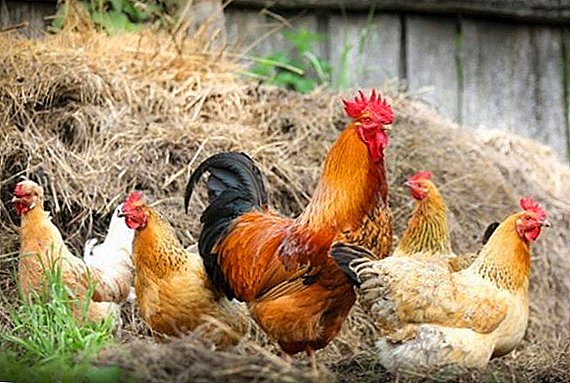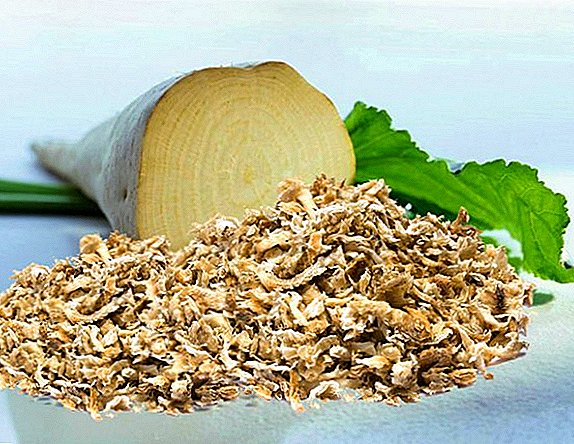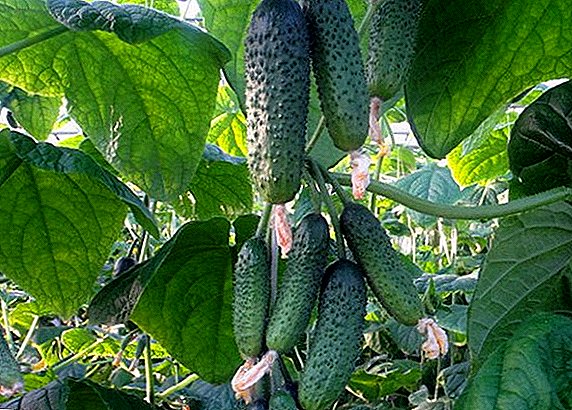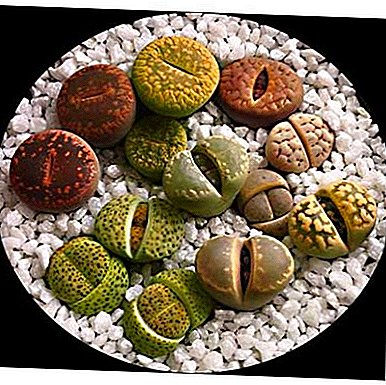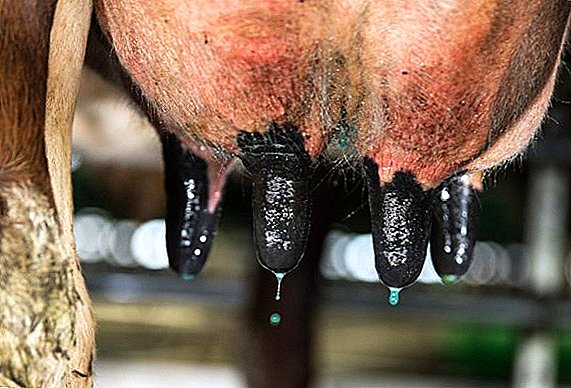 One of the mandatory principles of proper care for cows in order to maintain a high level of milk yield and maintain their productivity is udder hygiene.
One of the mandatory principles of proper care for cows in order to maintain a high level of milk yield and maintain their productivity is udder hygiene.
Let's look at why this nuance is so important, and analyze the basic rules that experts advise to adhere to before and after milking cows.
Udder Processing: Overview of Dry, Wet and Wet Cleaning Products
The successful maintenance of cattle one of its mandatory components involves minimizing the risk of infectious inflammation in the body of animals. In addition to increased contamination in the stall, one of the reasons for diagnosing mastitis in cows, or breast inflammation, as well as other diseases is improper or insufficiently thorough processing of the udder and milking machines.
Learn about the structure of the udder of a cow.At the risk of severe infectious inflammation of the mammary glands remain highly productive, dry and cows, calves for the first time. A considerable number of studies prove that the disinfection process immediately before and immediately after milking a cow significantly reduces the degree of invasion of primary bacteria into the teat canal of the udder of the animal.

Thus, preliminary and subsequent processing of the body is the most effective way to prevent diseases of the mammary glands in cattle.
Important! Until such time as the obligatory disinfection actions of the cow udder were introduced in the practice, about 80% of the nipples of animals from 100% of the subjects found Staphylococcus aureus, and in 60% of cases they diagnosed various types of organ damage (stretch marks with bleeding cracks, other microtraumas and defects , as well as hardness at the tips of the nipples).The general advice of veterinarians who specialize in this issue of farm workers and even individual owners of cows boils down to adhering to several principles in this case:
- mandatory disinfection of the teats of the udder before and after the milking process of a cow;
- correct use and high quality of disinfecting cow udder funds;
- systematic maintenance of milking equipment in working condition.

The modern market offers for purchase several excellent means for disinfecting the cow's udder in accordance with the method of purification:
- dry cleaning with disposable wipes made of paper or cloth (for example, "Sowotaan", "Dermatex");
- wet cleansing using pre-moistened antibacterial lotions and other means of disposable wipes ("Profilaclopre", "Profilac Hexopre", "Profilac Dermapre");
- wet type cleaning using soap, gel and foam solutions, which is the most effective ("Hygiene Lacto-Start", "Algalit", "Priolit", "Fitolit").
Did you know? Just as the patterns on the finger pads are unique and unique, so the lines on the skin of the nasolabial mirror of the cows of each individual are individual.You can purchase any of these cows udder care products at pet stores and specialized companies.

Before milking
Milk intake, or milking a cow, is carried out mechanically or manually. On large farms, where the livestock of cattle reaches the number of thirty individuals and more, milking devices are used, designed for one or two cows. Huge livestock complexes are equipped with milking parlors.
Before you begin the process of milking a cow, it is necessary to wash not only the nipples and the milk bowl, but also the belly and legs of the cattle, after which all the above-mentioned parts of the animal’s body and dishes should be subjected to mandatory antiseptic processing.
Learn how to milk a cow.The most common method of primary cleaning of the udder of a cow is wet. To perform it, preliminary preparation of a soap solution and clear water of warm temperature is required.
In order to avoid the spread of infection and its transfer from one cow to another, experts advise that individual tanks be used with their pre-treatment and water change. Napkins for washing and drying the udder must be taken new each time. After treatment, the washing material should be thoroughly rinsed off with water, otherwise it can get into the milk. 
Most often, cattle owners prefer detergents, which include elements such as lactic acid or lactate, and peroxide, or hydrogen peroxide. The first component contributes to the relaxation of the musculature of the udder of the cow, and the second exterminates the pathogenic microflora.
The soap mixture is applied using a spray or by using wipes pre-moistened in a bowl or other wash container. In both cases, after the procedures have been done, it is necessary to thoroughly clean the cow's udder with clean water, and also to dry it with paper napkins that can be used no more than once.
Familiarize yourself with udder diseases in cows.An equally popular way of using udder processing agents is to immerse the nipples in a special container with a disinfectant. But quite often in the milking rooms, especially in enterprises with a large number of dairy cows, disinfectant is used with the help of electric pump and water reservoir sprayers through a hose, nozzles, balloon or bottle dispensers.
It should be noted that the method of spraying is quite effective, but only in the case when the skin of a cow's nipples becomes completely covered with disinfectant. Unfortunately, most of the operators do not pay enough attention to this moment, spraying the udder in a hurry, for which reason their substantial surface is not always completely covered by the preparation. 
If milking is performed by the hardware method, the teat cups are put on cow nipples within a minute after the sterile udder treatment.
Important! Experienced owners of cows know: the first drops of milk are poured into another container, but not onto the ground, because they are necessary for performing the initial visual qualitative analysis of milk. Further implementation is subject to the milk mixture, which has not changed its normal consistency, and also has no clots and blood impurities.
After milking
Post-treatment of cow udder is the second mandatory component of proper care for cattle representatives. At the completion of the milking of the cow, the nipples are wiped with wet cloths or they are washed with warm water. As for the mechanical dairy fence, the latter actions are performed after removing the glasses for milking.
The operator’s goal is to protect the nipples and dairy glands of cattle from the entry of infectious pathogens into them. Such cow udder care products should be selected that form a protective film on the nipples (for example, iodine solution, antibacterial agents, as well as preparations that promote the accelerated reduction of the valvular muscular device and, accordingly, the closure of the milk channel in the nipple). 
Iodine disinfects the nipples of the cow, and also affects the speed of healing of existing wounds. Do not be afraid that the iodine mixture will stain the nipples: experts, on the contrary, are advised to take coloring preparations. In addition, the drug can be used repeatedly, as it does not cause addiction in the pathogenic microflora, but not often (due to its only drawback - provocation of dry skin).
Did you know? In Hinduism, a cow is traditionally considered a sacred animal. In India, this creature is equated with mother Earth as a symbol of generous sacrifice, abundance and fertility. In addition, the animal is revered in the Principality of Andorra, the "ice country" of Iceland and Nepal: the image of a cow adorns the state symbols of these countries.Another well-known antiseptic drug "Chlorhexidine" promotes the gluing of the nipple and closing the milk channel in it. Peroxyacetic acid is also a good disinfectant, however, if it is used, the concentration of the solution should be strictly observed. Improper dilution of the acid provokes chemical damage to the tissues of the udder and nipples of the cow.
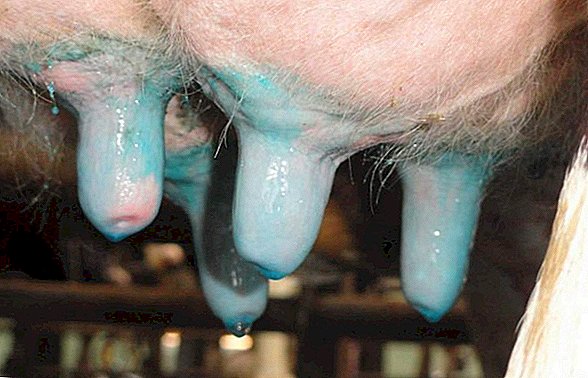
Antiseptics are poured into special glasses with the ability to lower each nipple there or else make the corresponding baths. There are such finishing preparations for udder treatment, like "Gralan" and "Compomol".
Udder massage before and after milking
The basis of dairy cows hygiene is not only cleaning the udder before and after milking, but also massaging the mammary gland. The average duration of the above procedure is about 30 seconds. This action must be carried out in order to stimulate the release of milk.
Massage of the mammary gland of a cow is the rubbing of all its four parts, which increase the production and outflow of the product from the mammary glands. This procedure is not required if the cow feeds the calf, because the milk outflow is performed naturally by using the inherent natural actions of the baby.
Learn what to do with smallpox, warts on the udder, purulent mastitis in a cow.It is necessary to begin massaging the mammary glands from those on your right side if you are facing the udder.
The massage algorithm is as follows:
- clasp the udder lobes with both hands so that the thumbs are oriented in different directions, and the palms form a “cup”;
- spend a light stroke of the udder, then press the mammary glands with a little circular motion of the thumbs;
- Simulate the natural movements of the calf's mouth when feeding: after gently tapping, push the mammary glands upward from the bottom;
- do not squeeze the milk, gently squeeze and dilute the cow nipples.

The final massaging of the cow's udder is performed as an auxiliary method for increasing the efficiency of milk intake, completely emptying the milk canals, cisterns and alveoli. A similar massage is made a few minutes before the end of the milking process.
Did you know? The most expensive meat in the world is marbled beef from Japanese Vagiu or Vagyu cows. For centuries, this type of cattle was bred only in this country, not far from the central city of Kobe. At the same time, the main rules of cultivation were not only special feeding with the highest quality and carefully tested herbs and drinking beer, but also daily rubbing the skin of animals with traditional Japanese drink sake, as well as respectful attitude towards them.
During the mechanical delivery of milk, the collector for one-hand intake of the product slightly pulls down, and the second is carried out by stroking with the addition of light tweaks from top to bottom. The milking time after the finishing massage varies within 2-3 minutes, then the milking machine is disconnected and the milk lobes are felt with the fingers.  The sensation of seals indicates that the cow has not given up all the milk: in this case, additional independent milking is carried out manually.
The sensation of seals indicates that the cow has not given up all the milk: in this case, additional independent milking is carried out manually.
Learn more about how to feed dry cows, how to run a cow.
If the cow was originally milked manually, then the final massaging of the udder is carried out with both hands in the following way:
- milk lobes, located on the right side, captured by hands and pressed them against one another;
- then you need to slightly tighten the glands up and release.
The frequency of repetitions of massage movements during the first milking of the first cows, during the distribution and stiffness of the nipple sphincter is 4-5 times during the whole process of milk intake. For timely and regular formation of milk, you should follow the recommendations of experts on the nutrition of cows in the dry period. 
Care of the udder after calving
Cows that will calve for the first time, are taught to the milking process already during the period of deadwood in order to avoid stress, although they experience it when the owners first attempt to carry out this action.
During the launch period, the first cow is accepted to massage the udder, but milking at this time is strictly prohibited due to the potential occurrence of preterm labor. Massage has a beneficial effect on the lymph flow and blood circulation, and in addition, relieves stress.
Find out what to do after calving, why the cow does not get up after calving.Immediately after the birth of the calf and detachment of the afterbirth, the cow (including the udder) is washed with warm water with the addition of antibacterial agents, carefully wiped with a towel and started to be milked. Stall clean, wash and dry the floor in it, and for bedding use soft hay.
After calving, the cow's udder becomes hard and firm to the touch, and udder edema is often also formed. This physiological process that develops naturally due to the slowing down of lymph outflow and circulatory failure in the mammary glands, as a rule, takes place without veterinary interventions on its own. But nevertheless, this phenomenon is a direct prerequisite for the distribution of nipples, otherwise inflammatory phenomena will begin to arise in this organ, accompanied by acute pain.
How to milk the first-calves: video The rubbing of the mammary gland of a cow that has left it is advisable to carry out with the help of a soft straw or a thick mitten. During this process, circular movements of the hands, squeezing of the glandular matter, patting on the udder and nipples are performed.
In order to avoid injuries on the hard, but still sensitive skin of the mammary glands, massage should be carried out with the above objects, previously soaked in a soapy, gel or foam solution.
Find out why milk tastes bad, why there is blood in the milk of a cow.Experts recommend the first milking after the birth of a calf 2-4 hours after calving. At first, the animal gives fatty colostrum, and it is difficult to wash out of the glasses and tubes of the milking equipment. At the individual farmsteads the first time after the birth of a calf, a cow is handed out.
In order to prevent accumulation of fluid in the tissues, regular walking in the dry period on pastures with small vegetation can be carried out, as well as proper feeding in the same time period (portions of succulent feed should be limited). 
Improper nutrition has a great impact on the rate of milk production, significantly increasing it, and, accordingly, puffiness occurs. The glandular tissue quickly normalizes, if you follow all the recommendations of specialists on feeding a cow that has left out immediately after the birth of the calf and gradually stabilize the milking regime.
Udder edema after the birth of a calf does not have a big impact on the quality of colostrum, but can cause inflammation of the mammary gland.
Learn what to do with the calf after birth.In order to reduce swelling perform the following activities:
- milking every 2-3 hours with the extrusion of milk in small portions;
- massage of the mammary glands from the bottom up;
- smearing the skin with a soap-vinegar solution, whipped into a foam (this will require soap and table vinegar, 2-3 tablespoons per 10 liters of water), which is left on the udder until the next stage of milking and washed off just before milk intake;
- reducing the number and servings of succulent feed of plant origin.
Udder edema: video In the event that there are several days left before calving, and puffiness has appeared on the udder, then it is allowed to start milking the pregnant cow in the amount of 1 time per day. It is very important to observe the utmost purity in the stall, since the mammary gland in which fluid has accumulated is very sensitive to the penetration of infectious pathogens.
Under normal conditions, the swelling takes place within 5-8 days after calving, otherwise it is necessary to urgently seek veterinary care.
Learn what cow's milk contains, what fat content and milk density means.Thus, the care of a cow udder includes the following activities:
- adherence to sanitary standards for keeping animals in stalls;
- the implementation of preventive actions that block the occurrence of mastitis and other inflammatory diseases of the mammary glands of cattle;
- compliance with the rules and principles of milking a cow;
- proper processing of milking machines, as well as the udder itself.
Udder hygiene is very important to preserve the health of cows and to obtain high-quality products - milk. Особому наблюдению, а также контролю за возникновением отёчности и профилактике воспаления поддаются молочные железы сухостойных, высокопродуктивных и только что отелившихся коров.
Обработка вымени коровы: видео
Reviews
1. Мытье или обработка вымени перед доением Кенопуром, Блю вош или др.
2. После доения в каждой четверти надо оставить 50-100 мл молока.
3Nipple treatment after milking by Kenolac, Kenocidin or others.
4. Before grazing, we process a cow on the withers from flies with Butox 7.5 (every 2 months) or Bayoflay (1 time per month)
5. When we start a cow, in each quarter we introduce a 1 "starting" syringe Nafensal DC or Orbenin DC or MultiMast DC (there are about 10 such syringes).
Something like this if short :)




